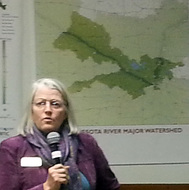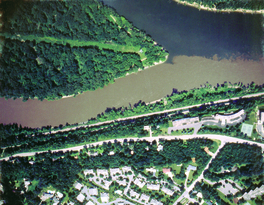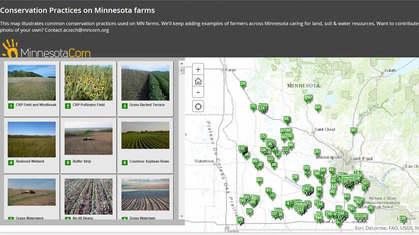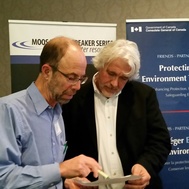November 2015
 The new,
citizen-led organization to promote the natural resource and economic health of
the Minnesota River basin is closing in on filling all 33 seats on its
governing Action Board.
Nineteen members
were named at the fifth Minnesota River Congress Nov. 12 in New Ulm. The Action
Board applications were approved by 93 people attending. Applications since
then have raised the total to 24, says Scott Sparlin of Coalition for a Clean
Minnesota River.
When
complete, the Action Board will include representatives from each of the
basin’s 13 major watersheds, and various sectors such as agriculture, business, recreation,
and local and state agencies. It will set policy, goals, and objectives for the
Congress. It will name a management committee to handle operations such as
finance and communications.
Action
Board members named Nov. 12 include: Jessie Shaffer, Bryce Hoppie, Forrest Peterson, Bob
Finley, Greg Genz, James and Mary Stone, Louis Knieper, Paul “Gus” Davis, Skip
Wright, Lee Ganske, Joanne Boettcher, Jeff Nielsen, Drew Campbell, Rylee Main,
Ted Suss, Scott Tedrick, Nancy Spooner Mueller, Brian Hicks, Mark Bosacker and
Jessica Nelson.
In other
business Nov. 12, the Congress voted to support proposed legislation (Senate File 2204) creating a
Minnesota River Commission. The support is conditional upon an opportunity for
the Congress to provide input on the final draft. Photo: Linda Loomis of the Lower Minnesota River Watershed District spoke about the legislation.
Prior to
the Congress business meeting, Liz Just of Wild River Academy reported on the
Paddle Forward excursion this past summer and fall down the entire 318-mile
length of the Minnesota River. George Rehm of the Minnesota Agricultural Water Resources Center gave overview of
the Discovery Farms water quality research projects.
More
information about the Minnesota River Congress is available at: www.watershedalliance.blogspot.com/. The next Congress
will scheduled in late February or early March.
Back to top
|
 After almost four years of processing 400-plus comments and
several requests for contested case hearings, the MPCA has finished revisions
to the South Metro Mississippi Total Maximum Daily (TMDL) report and submitted
it to the U.S. Environmental Protection Agency for final approval. The report
addresses the total suspended solids impairment in the river from St. Paul to
Lake Pepin. Photo: Plume of sediment entering the Mississippi from the Minnesota River.
During the 2012 public comment period, the agency received requests
for contested case hearings from the following entities:
- City
of Minneapolis;
- Minnesota
Cities Stormwater Coalition / League of Minnesota Cities and several other
member cities or entities;
- Lower
Minnesota River Watershed District;
- Minnesota
Soybean Growers Assoc., Brown County Corn and Soybean Growers, and several
individual producers; and
- Lake
Pepin Legacy Alliance.
After discussions and other communication with MPCA staff, the
city of Minneapolis, the Minnesota Cities Stormwater Coalition / League of
Minnesota Cities (and most of the member cities / entities) and the Lake Pepin
Legacy Alliance withdrew their hearing requests. After
much review and discussion, the MPCA denied the other hearing requests.
The revised TMDL report is
available on the South Metro
Mississippi webpage.
The majority of sediment in this stretch of the Mississippi
originates in the Greater Blue Earth
River and Minnesota River. The
agency is working on revisions to TMDL reports for those river systems. The
revisions address changes in water
quality standards.
Back to top
|
 With the topic "Leading shared solutions on water sustainability" setting the stage, a panel of local experts offered their perspectives at the Minnesota Agri-Growth Council annual conference Nov. 12 in Minnepolis. In the keynote address, Michael Reuter (photo) of the Nature Conservancy provided the national perspective of America's Watershed Initiative. Its website states that it's "a collaboration working with hundreds of business, government, academic, and civic organizations to find solutions for the challenges of managing the Mississippi River and the more than 250 rivers that flow into it."
Reuter moderated the panel, which addressed progress and opportunities here. Adam Birr, director of the Minnesota Corn Growers Association, said interest in sustainability is increasing in the ag community. There is sufficient science and technology to scale up efforts, while still addressing variables. John Linc Stine, MPCA commissioner, said most watersheds have been assessed, and that we need to trust the data and collaborate on solutions. Reuter said the common goals and technology generate a shared optimism, which now must focus on "the social side of things."
In the lunch keynote address, Christine Fruechette, CEO of Colle+McVoy, presented findings of a survey on "Agriculture, millennials, and sustainability." The survey showed that millennials (people born in the 1980s and 1990s) in agriculture rank high on sustainability beliefs and values.
In other conference news, AgStar Financial Services awarded a $30,000 grant to Agri-Growth and AGree for the Minnesota Working Lands Conservation Partnership (MWLCP). Joe Martin, MWLCP project director, said “We are grateful for this investment by AgStar, as we launch this project to develop grassroots solutions to water quality issues at a local level, and examine sustainability and on-farm profitability.” AGree is an initiative to bring together diverse groups on agriculture issues, and is supported by leading foundations.
Back to top
|
 More than 30 people attending the 11th Watershed Network meeting Nov. 19 in New Ulm learned about research work by ag commodity groups, perspectives on One Watershed One Plan, and the Minnesota River Congress.
Paul Meints, research director for the Minnesota Corn Growers Association, said their biggest concern is nitrate loss. It has both environmental and economic impacts. "We are developing a programmatic approach to address nitrate loss," Meints said. About $3.5 million generated from the corn check-off funds research on new products from corn, production, and stewardship. "Green chemistry" to discover new polymers using corn will be a focus of grant funds in 2016. Innovation grants in 2016 could help fund projects such as developing a cover crop planter. "We need to help farmers show what they can do," he said. Numerous examples of stewardship efforts by farmers are shown on the "Conservation Story Map" (photo) linked from the MCGA website.
For the soybean growers, research will include healthy soils and cover crops, and their economic benefit for farmers, said Joe Smentek, director of public policy for the Minnesota Soybean Growers Association.
Adam Beilke of BWSR gave an overview of the One Watershed One Plan program, and how it relates to the MPCA's Watershed Restoration And Protection Strategy. Diane Sander of the Crow River Organization of Water provided a local perspective on progress of the One Watershed One Plan that was launched earlier this year in the North Fork Crow River watershed. Scott Sparlin of the Coalition for a Clean Minnesota River gave an update on the recent Minnesota River Congress event Nov. 12 in New Ulm. The next Congress will take place in late February or
early March.
The spring watershed network meeting is tentatively scheduled for April 21 in Redwood Falls. The program is scheduled to include an update by Dr. Jeff Strock, U of M-Lamberton on drainage research at the Brian Hicks farm in Redwood County.
Back to top
|
 Facing
escalating costs to denitrify its drinking water, taken from the Raccoon River,
the Des Moines Water Works is suing three upstream
counties over nitrate levels in the river.
The
utility provides drinking water for 500,000 urban and rural customers in
central Iowa. To meet federal standards, it had to denitrify its water for a
record 148 days in one year, according to Bill Stowe, CEO and General Manager
of the utility. That’s up from the previous record of 108 days.
Stowe
recently spoke in St. Paul and Mankato as part of a lecture series held by the Freshwater Society.
The
utility is suing three Iowa counties and their drainage districts, alleging
they discharge nitrate pollutants into the river, and fail to obtain a National
Pollutant Discharge Elimination System (NPDES) permit in violation of the
Clean Water Act. The complaint seeks to declare the drainage districts as
“point sources,” meaning they are subject to regulation and required to have a
permit under federal and Iowa law.
The
utility chose to sue because it is spending more than $1 million a year to
denitrify its drinking water to safe consumption levels. If nitrate trends in
the Raccoon River continue to climb, then the utility will need to build a new
denitrification facility, estimated to cost between $76 million and $183
million.
According
to news reports, Iowa farm leaders say solutions like cover crops and
bioreactors that reduce nitrogen leaching take time to get in place. Also, the
law firm representing the counties argues that the drainage districts have no
power to direct how landowners use or manage their properties, nor control over
what goes through the drainage tiles.
The
lawsuit is scheduled to be heard in federal court in Sioux City in August 2016. Photo: Bill Stowe, right, answered questions following his talk.
Back to top
|
Gov. Mark Dayton, at the annual meetings of the Minnesota Farm Bureau and the Minnesota Farmers Union, announced his plans to convene a statewide Water Quality Summit in February. The summit will focus public attention on the serious challenges facing Minnesota’s water supplies – in both rural and urban areas of the state – and continue statewide dialogue around steps that must be taken to address those challenges.
The summit will include water quality experts, farmers, legislators, regulators, the business community, members of the public, local leaders, and a wide variety of other stakeholders. “My father believed – as I believe – that stewardship is a profound responsibility of each of us. To take what we have been given – or have acquired – and leave it in better condition for those who will inherit from us,” Gov. Dayton said. “This is everyone’s challenge, and everyone’s responsibility.”
In
his remarks to the Minnesota Farm Bureau, Gov. Dayton
elaborated on the need for a statewide Water Quality Summit, and provided some
additional information about what the summit may address. Audio of the governor's remarks can be found here. Additional details about the Governor's Water
Quality Summit will be provided in the coming weeks. Star Tribune editorial, Nov. 25, 2015: "Water quality is a worthy signature issue for Dayton."
Back to top
|